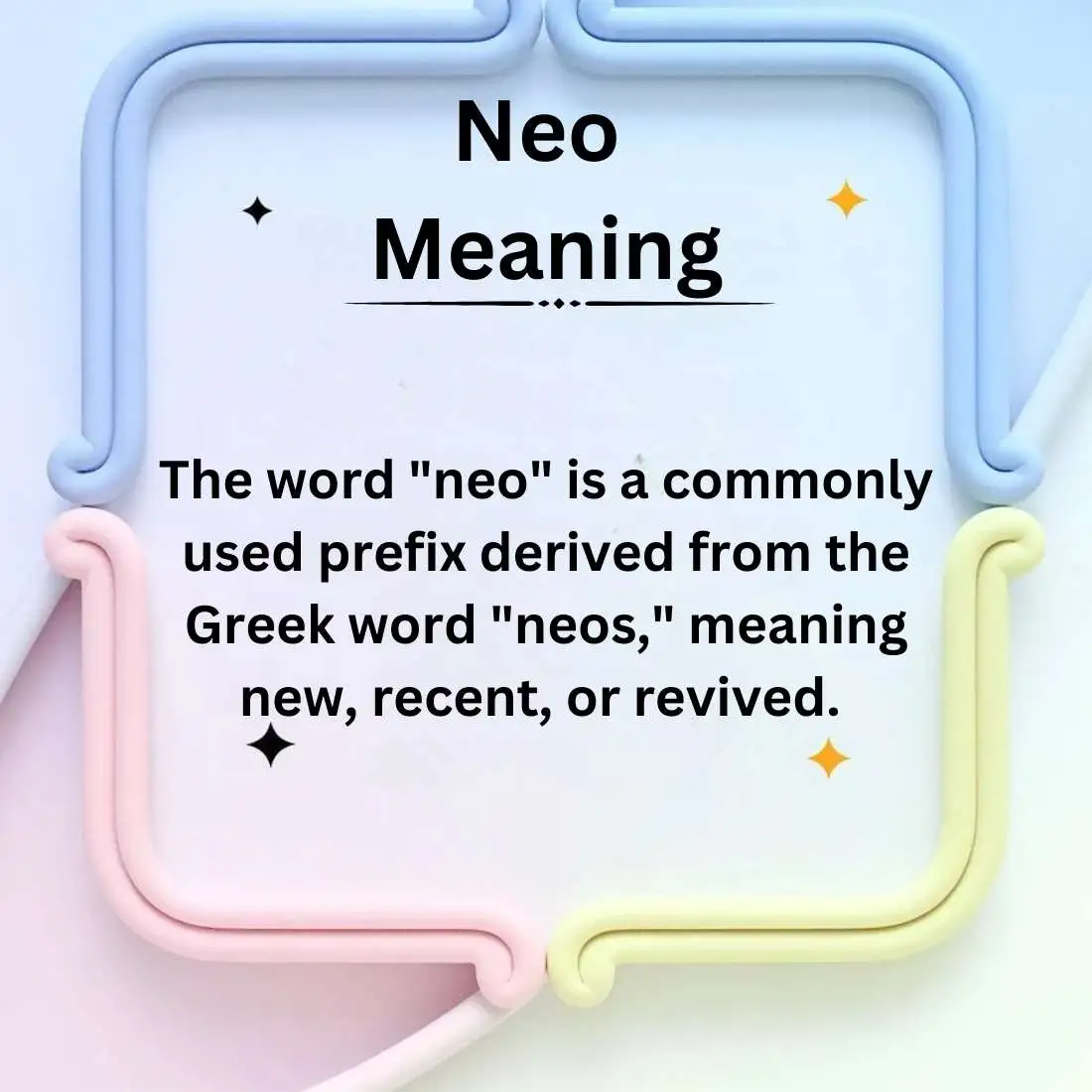Last Updated on May 23, 2025 by Muhammad Ramzan
The word “neo” is a commonly used prefix derived from the Greek word “neos,” meaning new, recent, or revived.
It is often used in various contexts, including language, philosophy, branding, and technology. Understanding the meaning of “neo” and its various applications can help you use it more effectively in different settings.
In this article, we will explore the meaning of “neo,” its usage across different fields, and alternatives to this term that you can use depending on the context.
Whether you need a formal, casual, or professional way to express the idea of “neo,” we’ve got you covered. Additionally, we will provide 10 text-friendly examples to ensure clarity in digital communication.
The Meaning of “Neo”
“Neo” functions as a prefix, which means it is typically attached to other words to form new meanings. Some of the most common interpretations include:
- New or recent – Used to describe something modern or recently developed (e.g., “neoclassical,” “neo-traditional”).
- Revival or rebirth – Indicates a renewed interest or adaptation of past trends (e.g., “neo-noir,” “neo-soul”).
- Modified or adapted – Describes something that has been changed or evolved from its original form (e.g., “neo-Darwinism”).
Examples of “Neo” in Different Contexts
Philosophy & Ideology
- Neoliberalism – A modern form of liberalism focusing on free-market policies.
- Neo-Marxism – A revised version of classical Marxist theories.
Art & Culture
- Neoclassical Architecture – A revival of classical Greek and Roman styles.
- Neo-Gothic Literature – A modern take on Gothic themes in literature.
Technology & Science
- Neo-Banking – Digital-only banking solutions.
- Neo-DNA – A term used in genetic modification and biotechnology.
4. Branding & Marketing
- Many companies use “neo” to brand their products, emphasizing innovation, such as “Neo Coffee” or “Neo Tech.”
Alternative Ways to Express “Neo”
Depending on your context, you might need to use different words or phrases instead of “neo.” Here are some polite, professional, and casual alternatives:
Formal Alternatives
- Modern (e.g., “modern design” instead of “neo-design”)
- Contemporary (e.g., “contemporary architecture”)
- Innovative (e.g., “innovative approach”)
- Updated (e.g., “updated version of a classic style”)
Professional Alternatives
- Advanced (e.g., “advanced financial systems” instead of “neo-banking”)
- Refined (e.g., “refined techniques in art”)
- Progressive (e.g., “progressive marketing strategies”)
- Next-generation (e.g., “next-generation software”)
Casual Alternatives
- New-age (e.g., “new-age music”)
- Futuristic (e.g., “futuristic car designs”)
- Trendy (e.g., “trendy clothing style”)
- Fresh (e.g., “fresh perspective on an old concept”)
Choosing the Right Alternative Based on Context
To determine the best alternative for “neo,” consider the following:
- Audience: A formal setting (e.g., a business presentation) may require words like “contemporary” or “refined,” while casual conversations may favor “trendy” or “new-age.”
- Industry: Scientific and tech-related fields often use “next-generation” or “advanced,” while marketing may prefer “innovative.”
- Tone: If you want a futuristic feel, use “futuristic”; if you mean revival, “updated” or “revived” might work better.
Texting Examples Using “Neo” and Its Alternatives
Here are text-friendly examples that you can use in digital conversations:
- “Check out this neo-futuristic design! So cool!”
- “We’re adopting a next-generation marketing strategy this year.”
- “I love how this artist blends traditional and modern influences.”
- “Neo-classical paintings have such a refined elegance.”
- “This app is part of the neo-banking trend—totally digital!”
- “Our company is focused on progressive and innovative solutions.”
- “New-age fashion trends are making a huge comeback!”
- “Neo-noir films have such a mysterious and moody vibe.”
- “We’re rebranding with a more futuristic approach to appeal to younger audiences.”
- “This book is a fresh take on classic horror—definitely worth a read!”
Conclusion
The prefix “neo” is widely used in different fields, emphasizing innovation, modernization, and revival.
Understanding its nuances allows you to use it effectively in both formal and casual settings. Whether you’re discussing technology, art, or ideology, choosing the right synonym for “neo” can enhance your communication and help you convey your ideas more clearly.
By utilizing alternatives like “modern,” “next-generation,” or “trendy,” you can tailor your language to fit any context.
Whether you’re writing a professional document, crafting a marketing message, or simply chatting with friends, knowing the best way to use “neo” and its substitutes will ensure your message is both accurate and engaging.

Justin Taylor is a gifted storyteller and dream analyst who brings a fresh perspective to biblical dream interpretations. His engaging narratives and intuitive insights captivate readers, guiding them through the intricate tapestry of their subconscious mind.








